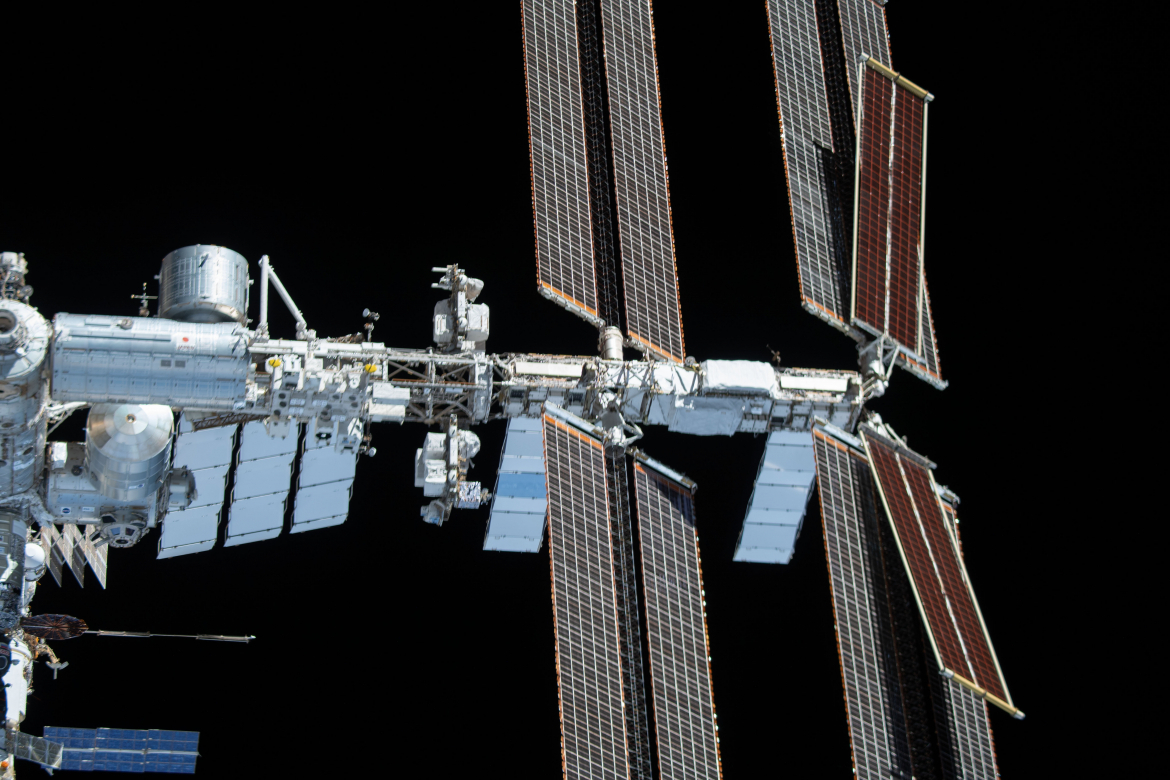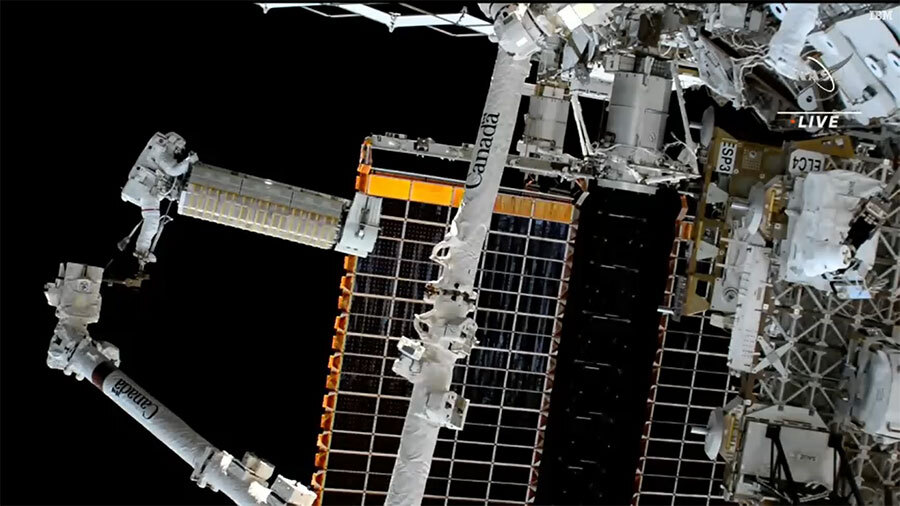5.12.2022

Two NASA astronauts conducted a spacewalk outside the International Space Station (ISS) on Saturday, Dec. 2, to install a new iROSA (ISS Roll-Out Solar Array).
Installation of the new array marked the third such iROSA to be attached to the space station since a power augmentation program to add at least six new sets of arrays to the ISS began in 2021.
The spacewalk, officially known as an Extra-Vehicular Activity (EVA), primarily focused on the installation of an iROSA to the 3A power channel on the starboard truss of the ISS.
However, an unrelated event on Nov. 23 on the 1B electrical channel added an element to this EVA.
According to NASA, on Nov. 23, “Sequential Shunt Unit (SSU) 1B experienced two power on resets (POR) and then tripped off. Ground teams performed a Seamless Power Channel Handover (SPCH) of the loads on Channel 1B to Channel 1A to recover power to the Channel 1B loads.”
“After an initial review of data, ground teams recommended to leave Channel 1B shunted and perform a survey of the 1B [solar array wing] to gather additional data for investigation.”
On Nov. 26, crewmembers took photos of the base of the solar array wing for the investigation.
During the Dec. 2 EVA, astronauts Josh Cassada and Frank Rubio disconnected a cable to ensure the 1B power channel could be reactivated — with the goal of restoring 75 percent of the array’s functionality and ensuring the connected batteries charge at expected levels.
A subsequent EVA to install a fourth iROSA, this time to the 4A power channel on the port truss of the ISS, is currently scheduled for Dec. 19.
iROSAs
The iROSAs are part of a plan by NASA to increase the ISS’s power generation capability back to what it essentially was when the eight original solar array wings were launched between 2000 and 2009.
With the placement of six iROSAs on the station, the orbital lab will once again be capable of producing 215 kW of power for its scientific and operational needs.
The original arrays, as expected, degraded in efficiency over time and are now only capable of generating approximately 160 kW.
Each new iROSA will contribute approximately 10 kW of power to the ISS.
“There were a couple of operational things that we learned,” said Matt Mickle, Senior Manager for ISS Developmental Projects, Boeing, in an interview with NASASpaceflight.
“There was a little bit of interference when the iROSAs were unhinged that we had to work around during the first EVAs.”
The iROSAs are launched hinged and are then mounted to the station’s mast canisters of the original arrays. During unfolding after attachment, clearances became an issue.
“So we made some minor modifications to the design to elongate a slot that enables the bracket that’s on the mounting structure to have clearance so that we don’t have that interference anymore,” added Mickle.
Another item noticed during the first two iROSA installations that resulted in a modification to the third and fourth arrays related to their sunshades.
“Another thing that we noticed when we unfurled the solar arrays was that there was some buckling and shuttling of the sunshades.”

Angle showing how the new IROSAs will be deployed over the current arrays. (Credit: NASA)
The sunshades shield the original arrays’ longeron masts from the Sun to stop them from undergoing thermal and structural loading.
“There was a little bit of buckling in that,” noted Mickle, “so we made a minor modification to the design. We’re using a thinner cable that the sunshades are deployed on, and we’ve tested that on the ground and it looks great. And then we also added an additional hinge to prevent some of the buckling.”
Lastly, a third lesson learned from the first two iROSAs was related to crew handling during the orbital installation process.
An operation change has now been made for the crew, enabling them to use a multi-use tether to attach to handrails to make it more comfortable during the translation process.
Should additional items of interest be seen during the installation of the third and fourth iROSAs, there would be time to make slight alterations to operational procedures and potentially to the arrays themselves given that the next set is not scheduled to launch until June 2023 on the SpaceX CRS-28 mission.
While the iROSAs are slated to be launched shortly before their installation, as was the case with the first two sets of arrays and is the plan for the third, there is a way to store the iROSAs outside the ISS if needed.
“One of the things we look at is the thermal environment in which they would be stowed,” noted Mickle. “We want to make sure that — because the design of the iROSAs basically is a rolled up array that has potential energy stored in a boom which allows the iROSAs to be deployed without any type of motor — we want to make sure that that potential energy is still capable for the full deployment.”
To do that, the arrays — if they needed to be stored before installation — would be stored in a thermally benign area outside the station.
Quelle: NS
+++
Spacewalkers Complete New Solar Array Installation on Station

NASA spacewalker Josh Cassada rides the Canadarm2 robotic arm carrying the roll-out solar array to its installation site on the Starboard-4 truss segment. Credit: NASA TV
Expedition 68 Flight Engineers Josh Cassada and Frank Rubio of NASA concluded their spacewalk at 2:21 p.m. EST after 7 hours and 5 minutes.
Cassada and Rubio completed their major objectives for today to install an International Space Station Roll-Out Solar Array (iROSA) and disconnect a cable to ensure the 1B channel can be reactivated. They also completed an additional task to release several bolts for the upcoming iROSA installation on the 4A power channel on the port truss.
It was the 256th spacewalk in support of space station assembly, upgrades and maintenance, and was the second spacewalk for both astronauts. Cassada and Rubio are in the midst of a planned six-month science mission living and working aboard the microgravity laboratory to advance scientific knowledge and demonstrate new technologies for future human and robotic exploration missions, including lunar missions through NASA’s Artemis program.
The next U.S. spacewalk is scheduled for Monday, Dec. 19, to install an iROSA on the 4A power channel on the port truss. This will be the fourth iROSAs out of a total six planned for installation. The iROSAs will increase power generation capability by up to 30%, increasing the station’s total available power from 160 kilowatts to up to 215 kilowatts.
Quelle: NASA
